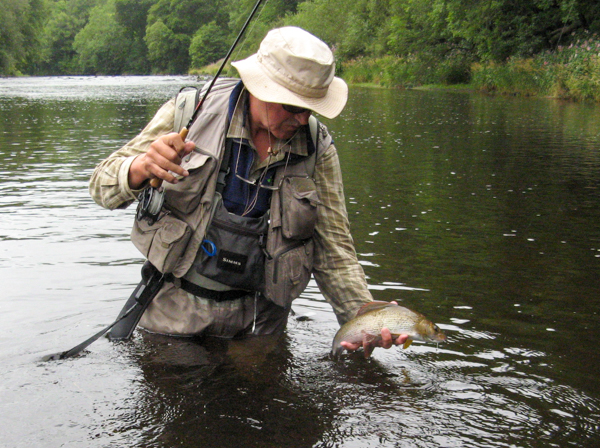
The Light Hare’s Fur Parachute Emerger – A Fly for All Seasons? (16/02/2025)
The Light Hare’s Fur Parachute Emerger – A Fly for All Seasons?
Published Sunday 16th February 2025
Written by David Collins
How often do we hear, “I’ve probably caught more fish on this fly than any other” or “It’s my go-to pattern”? The basis of such statements depends, of course, on many factors, including where you more often prefer to fish (rivers, streams or still waters), what factors influence your selection of method and fly, as well as how you may prefer to fish – on the top or down below. These ultimately determine why and how often we go to a specific pattern. Also, of course, repeated success will likely determine that ‘that fly’ ends up on the front end more often than others, so it can also become something of a self-fulfilling prophesy!
After moving to South Wales as a teenager in the early 60s, I started fly fishing on the often bible-black Ogmore and caught most of my trout using a Blue Upright – then my go-to pattern, largely because there weren’t many other options in my meagre schoolboy’s selection of flies anyway! When, many years later, I eventually got back to fly fishing, the guys at Sportfish in Theale (then my local fly-fishing emporium) advised me that the ‘dry fly’ world had changed dramatically. New things called emergers – F-Flies and parachute patterns – had arrived on the scene and, buying some of Fulling Mill’s variants and using them on the Wiltshire Avon south of Salisbury, transformed my success rate. In those chalk stream years, a small Hare’s Ear Klinkhamer-style parachute seemed effective for trout and grayling across the season.
Once I started tying my own flies, I tied my own version of this parachute emerger on Partridge’s, regrettably now obsolete, Oliver Edwards K14ST – a shallow-bended chrome emerger hook, and have stuck to similar shaped hooks ever since.

For the body, I removed all the white, chestnut or black spiky bits that would be picked out if dubbing a nymph and just used the fur from light hare’s mask. Applied to a light tan thread, when wet, this fur produces a lovely pale tan translucent body, which I feel sure is part of the attraction of the fly, as is the iridescence of the peacock herl at the thorax. For the post, orange AeroDry has become the preferred highly visible option, and a red game hackle finishes the fly. I tie it in sizes from 20 to 12, producing bodies from 10 to 4-5 mm.
Whilst my dry fly box contains the inevitable accumulation of tried and tested flies, including patterns designed for specific insects and other parachute emergers on variously shaped hooks, why is this one so effective across the seasons, from tempting chub and early-season trout to late-season grayling, and for rainbows on still waters too?
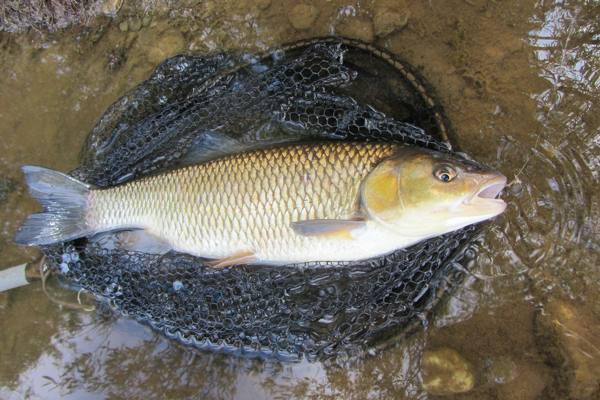
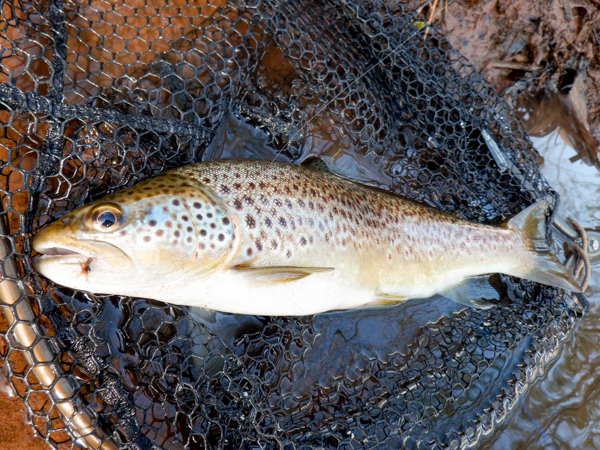
I can only assume that the fly’s shape, colour and translucence are representative of many things buggy, giving it general appeal and that, in the sizes used, can pass as an emerging upwing from LDO time onwards. It is highly effective from summer into autumn, when grayling feed on Pale Watery’s, midge and small terrestrials. On a size 16 or 18, plus the alternative option of a similarly sized and dubbed Ducks Dun, and a Grayling Steel Blue, a short and appetising menu can be offered to those sipping ladies!
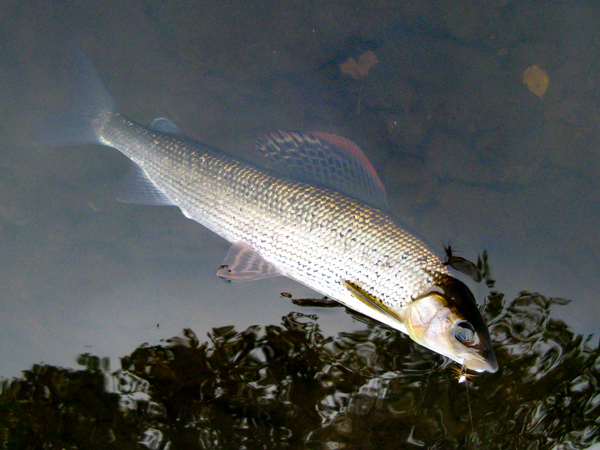
It is also a great search pattern on rivers and streams when fish aren’t rising, tempting opportunistic fish to get off their backsides at almost any time of year. On the Usk’s glides in the early morning, when all that seems to be on the wing are midges, the small sizes will often move non-rising fish. In larger sizes, fished static and twitched on still waters, rainbows will nail it. I have often wondered if fish feeding on midge might perceive the iridescent thorax and hackle as the midge, the ‘abdomen body’ as a shuck, and whether the orange hue from the post provides some added allure – who knows? Not me for sure – oh, what we’d all give for a brief chat with a trout or grayling! Tie the hackle fuller on a larger hook size, and it’s a great pattern for a fishing duo.
Over the last 25 years or so, fishing the rivers and streams of the Welsh borders and elsewhere, I think I can safely say that, for me, “I’ve probably caught more fish on this fly than any other” and that “It’s a go-to pattern”. This hare’s fur (HF) emerger’s versatility has served me well, and if, in the perhaps unlikely event that you don’t already use something like this, then I commend it to you.

Of course, it has partly become a go-to pattern for me because I mainly fish on rivers and streams, and I also much prefer to fish on the top of the water whenever possible. As Chris Yates said to Bernard Venables in ‘A Passion for Angling’”, when admiring Mr Crabtree’s classic perch float on their visit to Chew, “Pleasing in its appearance and even more pleasing in its disappearance”. I am always reminded of those classic and amusing lines when fishing this, or any other fly on the surface, praying that it will solicit interest and then, tense with anticipation, that unquenchable delight that keeps bringing us back for more, when it finally disappears. Good luck and tight lines!
The Hare’s Fur Emerger – Materials
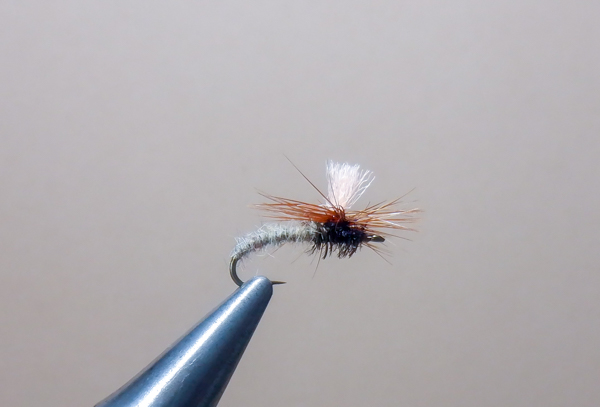
- Hook: Partridge K14ST, Size 14-20. While this model of hook is no longer available, other shallow-bend emerger options include Tiemco TMC200R (16-20), Partridge K12ST (18-22), Daichi 1270 (16-22) or Fulling Mill’s All-Purpose Light FM-1180 (12-18), modified using fine flat-nosed pliers to create a slight bend at the middle of the hook shank.
- Thread: Uni 8/0 or Semperfli 12/0 Tan, depending on hook size.
- Body: Wapsi Light Hare’s Mask – Remove the spiky stuff and just use the fluffy fur.
- Thorax: Peacock herl or, for smaller sizes, peacock sword or Hends Spectra Peacock dubbing (code 435).
- Wing Post: TMC AeroDry, fluorescent orange. For improved visibility in low light, fluorescent yellow.
- Hackle: Rooster, red game or brown.


